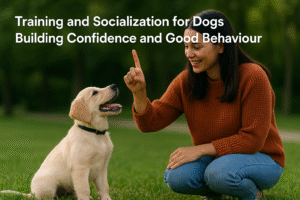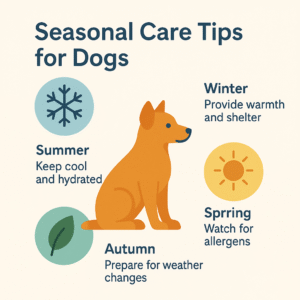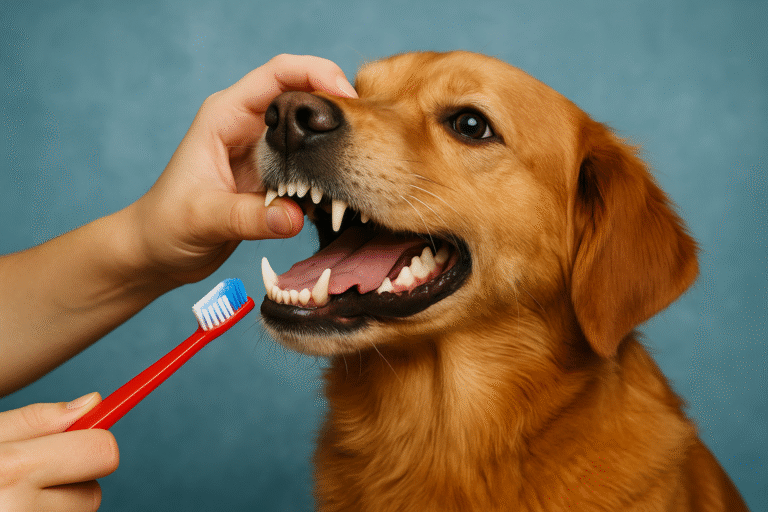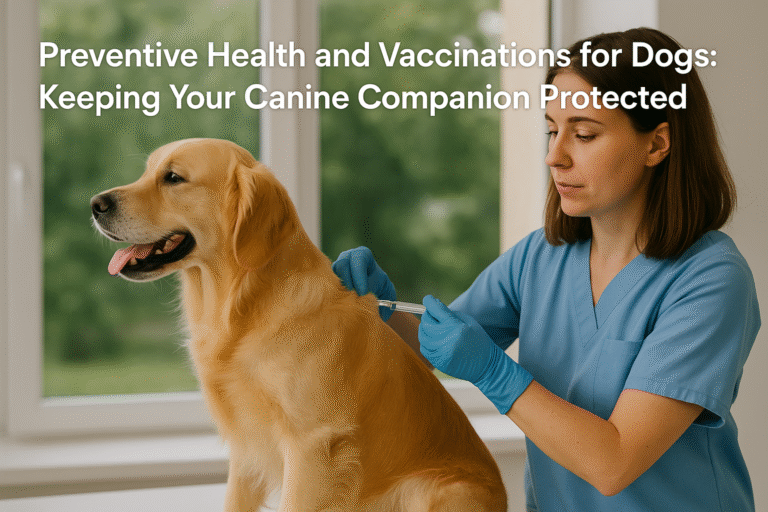Dogs may have fur coats, but that doesn’t mean they’re immune to the changing seasons. Temperature extremes, humidity, parasites and allergens can all affect your dog’s comfort and health. By anticipating seasonal challenges and adapting your routine, you can ensure your four‑legged companion thrives in every weather. This guide provides practical tips for keeping dogs safe and comfortable through spring, summer, autumn and winter.
Summer: Beat the Heat
Hot weather can be dangerous for dogs, especially brachycephalic breeds (like Bulldogs and Pugs), seniors and puppies who have trouble regulating body temperature. Heat stroke can occur quickly when a dog’s body temperature rises above 104 °F. To prevent overheating, avoid strenuous exercise during the hottest part of the day. Schedule walks in the early morning or late evening, provide plenty of fresh water and access to shade, and consider using a cooling vest or mat. Never leave your dog in a parked car, even with the windows cracked—temperatures inside can soar to fatal levels in minutes. On humid days, watch for signs of heat stress such as excessive panting, drooling, lethargy or collapse; bring your dog indoors immediately and contact your veterinarian.
Surfaces can also become dangerously hot. Asphalt, sand and metal can burn paw pads. Place the back of your hand on the pavement; if it’s too hot for you, it’s too hot for your dog. Stick to grassy or shaded paths, or outfit your dog with protective booties. After walks, rinse or wipe paws to remove irritants. Keeping dogs groomed in summer helps them stay cool, but avoid shaving double‑coated breeds—these coats actually insulate against heat and sunburn. Instead, brush regularly to remove dead undercoat. Summer also brings an explosion of fleas, ticks and mosquitoes. Use vet‑recommended preventives to protect your dog from parasites and diseases such as heartworm, Lyme disease and ehrlichiosis.
Winter: Warmth and Paw Protection
Cold weather poses its own risks. Dogs can develop frostbite on ears, tails and paws, and hypothermia if they’re exposed to frigid temperatures for too long. Small breeds, short‑haired dogs, seniors and puppies feel the cold more acutely. Limit outdoor time on very cold days, and provide a cozy indoor sleeping area away from drafts. When temperatures dip below freezing, dress your dog in a sweater or insulated coat, and use booties or paw balm to shield their pads from snow, ice and de‑icing chemicals. Snow and ice can also collect between toes; trim fur around the paws and rinse with lukewarm water after walks to remove salt and grit. Increase caloric intake slightly if your dog is very active in the cold; it takes more energy to stay warm. However, continue to provide exercise and mental stimulation indoors to prevent weight gain and boredom.
Dry winter air can irritate skin and cause dandruff. Run a humidifier inside and supplement with omega‑3 fatty acids (as advised by your veterinarian) to promote a healthy coat. Check water bowls frequently—water can freeze outdoors or evaporate faster in heated homes. Never shave your dog down to the skin in winter; fur provides necessary insulation.
Spring: Allergies and Puddles
Spring brings warmer temperatures, longer days and…puddles. It’s also prime time for parasites and allergies. Start or update your flea, tick and heartworm preventives before insect activity peaks. After months of lighter exercise, gradually increase your dog’s activity level to rebuild stamina and avoid injury. Many dogs suffer from seasonal allergies caused by pollen, grasses and molds. Watch for excessive scratching, licking, ear infections or watery eyes, and consult your veterinarian about anti‑histamines or other treatments. Spring blooms can also include toxic plants like lilies, daffodils and azaleas—keep dogs away from your garden beds and don’t let them nibble plants on walks. With melting snow comes muddy paws; wipe or rinse your dog’s feet after outdoor adventures to prevent skin irritation.
Autumn: Changing Light and Hidden Dangers
Fall temperatures are pleasant for dogs, but there are still precautions to take. Shorter daylight hours mean more walks after dark; equip your dog with reflective collars, LED lights or a reflective vest to increase visibility to drivers and cyclists. Fallen leaves can conceal sharp objects, ticks or mushrooms. Many mushrooms are toxic to dogs; discourage foraging and call your veterinarian if ingestion is suspected. Keep dogs away from piles of raked leaves, which can harbor mold spores and bacteria. Autumn is also the time when rodents seek shelter, so rodenticides and antifreeze may be used more frequently. Both are highly toxic to dogs; store them securely and clean up any spills immediately. As the weather cools, check that your dog’s ID tags and microchip information are up to date—holiday gatherings and fireworks can startle pets and lead to escapes.
Year‑Round Essentials
Regardless of season, some care practices remain constant. Provide constant access to fresh, clean water and a balanced diet appropriate for your dog’s life stage, body condition and activity level. Maintain a regular grooming routine to keep coat and skin healthy, reduce shedding and check for lumps, bumps, parasites or injuries. Trim nails regularly—long nails can snag, split or affect gait. Keep up with vaccinations and wellness exams; preventive care helps detect health issues before they become serious. Adjust calorie intake and exercise levels according to seasonal activity (dogs may burn more energy hiking in cool weather than lounging indoors in the heat). Lastly, ensure mental stimulation with training, puzzle toys and play, especially during extreme weather when outdoor time is limited.
Our dogs rely on us to keep them safe and comfortable through every season. By understanding the unique challenges posed by heat, cold, allergens and daylight changes, you can make simple adjustments that have a huge impact on your dog’s health and happiness. Enjoy the changing seasons together—whether you’re exploring sunny trails, romping through snow or snuggling indoors on a rainy day. For personalized advice about seasonal care or to schedule a check‑up, please contact us. We’re here to help you and your dog enjoy the best each season has to offer.













